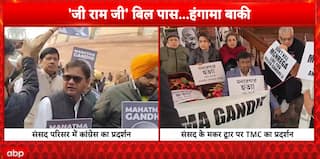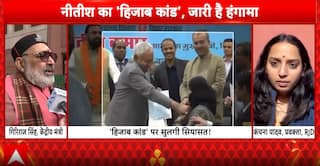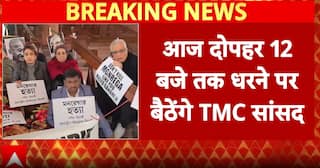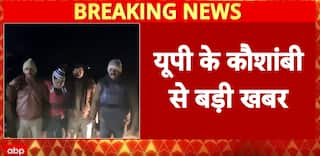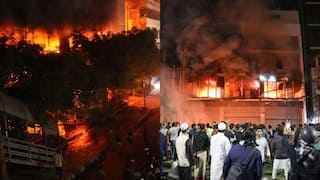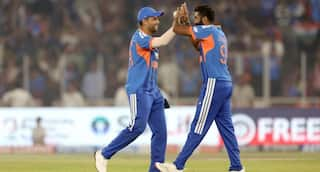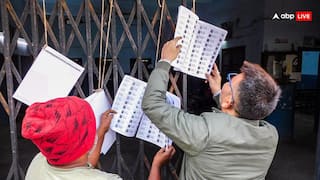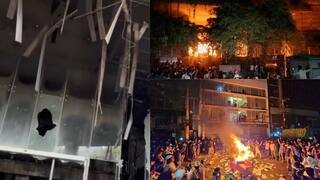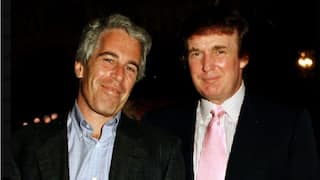Explorer
When Modi Govt Disregarded Pranab Mukherjee's Advice To Delay Imposition Of Prez Rule In Uttarakhand By 36 Hours
Author-Journalist Rasheed Kidwai tells about the time when Modi Govt Disregarded Pranab Mukherjee's Advice To Delay Imposition Of Prez Rule as mentioned in the former President's memoirs-The Presidential Years

FILE PIC/AFP
Former President Pranab Mukherjee has not shied from penning down his differences with the Narendra Modi regime.
In his memoirs, The Presidential Years – 2012-2017, [ Rupa Publications India], Mukherjee says he had advised Arun Jaitley, the then union minister of finance, and Nripendra Misra, principal secretary to Prime minister Narendra Modi to wait for 36 hours before taking a decision i.e. imposition of President’s Rule in Uttrakhand. But it was disregarded.
Also Read: Opinion | Will The Congress Leadership Conundrum Be Untangled This Makar Sankranti?
Uttarakhand's political crisis had erupted in March 2016, dislodging Harish Rawat led Congress government. A revolt by nine Congress MLAs had destabilised the Rawat government and led to the imposition of the President's Rule. However, subsequent court hearings and Supreme Court’s insistence on a floor test, helped Rawat bounce back. The episode had caused acute embarrassment to the Modi regime.
Mukherjee claims he accepted the recommendation of the home minister [Rajnath Singh] for the imposition of President’s Rule, because, according to the Constitution, the president had to act on the basis of the report of the governor of a state, or otherwise. The term ‘otherwise’ could mean any other relevant authority of the government. In the case at hand, it was the union home minister.
Rawat’s dismissal had led to a furore. While the state governor asked Rawat to prove his majority on the floor of the assembly, the speaker issued notices of disqualification to nine rebel Congress MLAs.
Also Read|Rahul Gandhi Considered Twitter As An "Urban Fad", Says Congress Dissenter Sanjay Jha In His New Book
Prime Minister Modi presided over a cabinet meeting and the Centre decided to recommend President’s Rule. On 26 March 2016. Mukherjee records that at around 11.15 pm, Arun Jaitley, the then union minister of finance, and Nripendra Misra, principal secretary to the Prime minister, called on him in the study to brief him about the union cabinet decision.
“At the outset, I told them that the government should wait for 36 hours before making a decision. I made it clear that such decisions should be in keeping with the various judicial pronouncements on the subject, including that in the Dharam Vira and the S.R. Bommai cases.
However, I had no discretion in the case. I could have returned the file recommending President’s Rule in the state, for reconsideration, but that would have served no purpose except to make headlines” Mukherjee wrote adding, “I was clear that I did not want to add to the already brewing controversy. A day before Rawat was to prove his strength, President’s Rule was imposed. As things turned out, Rawat was asked by the Supreme Court, where the matter had landed, to demonstrate his majority on the floor of the House. Had the government taken the points I had raised into consideration before deciding on President’s Rule, it could have perhaps avoided the embarrassment of the Court’s obiter dicta.”
There is another interesting revelation in the fourth and last edition of Mukherjee’s memoirs.
Had there been a ‘hung house’ in 2014, Narendra Modi-led BJP-NDA ties with the then president Pranab Mukherjee would have turned sour.
Writing about ‘Elections 2014,’ Mukherjee said he expected a hung Parliament with the BJP emerging as the single largest party with about 195–200 seats. In such a situation, it would have been my constitutional responsibility to ensure stability. Had the Congress emerged with fewer seats but promised a stable government, I would have invited the leader of the party to form the government, keeping in mind their previous track record in managing coalition governments successfully.” When the actual verdict came, the BJP achieved an absolute majority with 282 seats out of 543 while the NDA tally was 336.
Mukherjee, a seasoned politician, and ex-Congressman then goes on to justify this line of thinking. “This would have been in contravention of the convention established by the former president, Shankar Dayal Sharma, of inviting the single-largest party to form the government. He had invited Vajpayee to form the government after a hung House in 1996, despite lack of clarity on Vajpayee’s numbers. I was convinced even before the 2014 elections that I would not be neutral between stability and instability.”
Also Read|Sonia Gandhi: How The Girl From Orbsassano Became First Class Graduate From University Of Life
For those familiar with the 2014 pre-polls scenario, talk of a fractured mandate was a frequent conversation in Delhi political circles. The Congress, in particular, had remained upbeat constantly pointing at ‘160 club’ [club of some senior BJP leaders allegedly predicting 160-plus seats for the BJP under Modi’s leadership.
By the 2019 general elections, Mukherjee had left Rashtrapati Bhavan. The ‘apolitical’ leader was nevertheless expecting a coalition. “I did believe that there was a possibility of a coalition government coming to power in 2019, which could be either a pre- or post-poll alliance. I am convinced that Indian democracy is resilient, and the electorate is wiser than any individual or party. The voters have never failed this country. Eventually, Modi returned with even bigger numbers than he had in 2014, but still proceeded to form a coalition government with the BJP’s pre-poll allies.” The keywords to mark in Mukherjee’s observation is ‘pre- or post-poll alliance’ which could easily be deciphered as NDA led [Pre] and Congress – plus UPA plus NDA parties. Would Mukherjee have considered leading such a coalition? The book gives no clue.
[Author-Journalist Rasheed Kidwai is a visiting Fellow of the Observer Research Foundation. He tracks government and politics and considered a specialist on Congress party affairs.]
Disclaimer: The opinions, beliefs, and views expressed by the various authors and forum participants on this website are personal and do not reflect the opinions, beliefs, and views of ABP News Network Pvt Ltd.
Follow Blog News on ABP Live for more latest stories and trending topics. Watch breaking news and top headlines online on ABP News LIVE TV
View More









